The Great Southern Fish
This is the Fish that is called Southern. He seems to take water in his mouth
from the sign of Aquarius.
Once, when Isis was in labor, he is thought to have saved her, and as a reward
for this kindness she placed the fish among the stars.
- Hyginus, Poetica Astronomica, II.41
East London, a small coastal city on the south-east tip of South Africa, is hot and muggy in December, the Southern Hemisphere’s mid-summer. At 9:45 AM on December 22, 19381, self-taught naturalist Marjorie Courtenay-Latimer, curator of the small East London Museum, received a phone call from the harbor; an old friend, Capt Hendrik Goosen, had arrived with a load of fish, and had set aside a pile of specimens for her, as he did every time he docked. Overwhelmed with work, she almost declined…”but I thought of how good everyone at the trawler fleet had been to me, and it being so near to Christmas I thought the least I could do to wish them the compliments of the season.”2 She grabbed a sack and took a taxi to the wharf. After wishing everyone a happy Christmas, she quickly scanned the pile of odd sharks, starfish and sponges on Goosen’s trawler Nerine and told a crewman she would probably not be taking anything – but then, ah, but then, she saw an odd blue fin peeking out of the pile…at that moment, with Jupiter, Piscis Austrinus, the constellation of the Great Southern Fish, was rising in the east
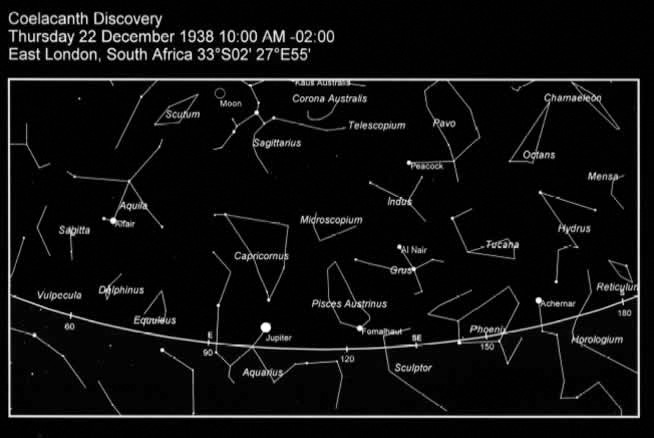
——————————————————————————————————————————-
“I picked away the layers of slime to reveal the most beautiful fish I had ever seen – it was 5 feet long, a pale mauvy blue with faint flecks of whitish spots and an iridescent silver-blue-green sheen all over.
It was covered in hard scales, and it had four limb-like fins and a strange little pupply-dog tail. It was such a beautiful fish…but I didn’t know what it was.”3
——————————————————————————————————————————-
Courtenay-Latimer was excited, sure she had found something quite unique, but then her troubles began; not only was the long, heavy (127 lb) fish at first refused by an indignant taxi driver, but her frantic attempts to find a way to preserve it in the stifling heat met with blank refusals from every possible source – the city mortician was adamant, the cold storage guardian, fearful of contamination, refused to put it in with the food (in 1938 these were the only 2 large refrigeration facilities available). The local taxidermist, her friend, suggested they soak it in formalin and wrap it well to preserve it just long enough for her to contact her mentor, ichthyologist J L B Smith, who she hoped would be able to identify her strange, beautiful fish. Formalin was scarce – she was only able to obtain a small amount, which would have to do. With a sheets of newspaper and a bedsheet cadged from her mother, they carefully wrapped her mysterious treasure. But even though she wrote to Smith immediately, including a detailed description and drawing, there was no reply – he was away for the holiday, and did not receive the letter with its drawing until January 3rd, 13 days later! Smith wrote later (of the drawing), “I stared and stared…and then a bomb seemed to burst in my brain…I was looking at a series of fishy creatures.. that had lived in the dim past…of which only fragmentary remains in rocks are known…what I suspected was so utterly preposterous that my common sense kept up a steady fire of scorn for my idiocy in even thinking of it!”4 His brilliant, “bombed” brain with its photographic memory had made an astonishing connection between the rough sketch in the letter and a 200-million-year-old fossil that he had seen in a scientific journal. He said to his wife , “I know you’ll think I’m crazy – but they have found a fish in East London of a type thought to have been extinct for many millions of years…you see that tail? No living fish has a tail like that!” Seeing the date on the letter, he rushed off a telegram: MOST IMPORTANT PRESERVE SKELETON AND GILLS FISH DESCRIBED, then wrote a letter urging Marjorie to also save the internal organs, telling her that he suspected that it could be a fish supposedly extinct for a very long time. But it was too late – in the harsh, persistent heat, despite the formalin, the magnificent fish had begun to decompose; pressured by the taxidermist who saw that their careful wrappings were leaking, and despondent that she had not heard from Smith, Marjorie had told him to go ahead and mount the fish, so that at least the skeleton and skin would be preserved. The decomposing innards were thrown away (when Smith finally managed to reached her by phone, he insisted that she try to recover them, but they had been dumped into the ocean with the rest of the town’s rubbish).
“One of my most constant and
peculiar obessions had always been a
conviction that I was destined to
discover some quite outrageous creature”5
- J L B Smith
It was weeks before Smith (by now convinced that the fish was a coelacanth6, thought to have been extinct for millions of years), could travel to East London to see it for himself; in the meantime, he agonized endlessly; if, on the one hand, it was a coelacanth it would be the most important zoological find of the century! On the other hand, if he announced that it was and turned out to be wrong, he would be the laughingstock of the scientific world. A survival from the Paleozoic Era?7 Impossible! Preposterous! It simply could not have been alive all that time…and have remained unknown to humankind!
Finally, on February 16, 1939, J L B Smith arrived in East London, and at 10 AM saw the fish for the first time. Stunned, he stood “as if stricken to stone.”8 He now knew, with certainty, that he was looking at a fish that was on this planet 400 million years ago (and was assumed to have been extinct for the last 50 million of them!9)
“There was not a shadow of doubt; scale by scale, bone by bone, fin by fin, it was a true coelacanth.”10
At the moment Smith beheld the coelacanth, Mercury, Vesta and the Sun were aligned with stars of Piscis Austrinus, the Great Southern Fish11
No sooner had Smith announced the discovery than he and Courtenay-Latimer had to fend off excited reporters, photographers and ordinary local people all wanting to see the wonderful fish caught in their waters (because of its limb-like fins, there was much speculation that it was a “missing link” in human evolution). Scientists reacted with intense skepticism (some openly mocked Smith’s claims) but when his article and a photograph of the fish appeared in Nature on March 18, 1939 (with Venus and the Moon aligned with stars of Piscis Austrinus), its place in science was firmly established and catalogued.12 As the person who had determined the creature’s identity, Smith had the right to name it. He decided on Latimeria chalumnae, for the woman who saved it for science and the Chalumna river mouth where it had been caught.13 With characteristic modesty, Marjorie said that it should have been named for Capt Goosens, who had brought it in (Goosens had thought it was so beautiful that he had wanted to set it free!) But perhaps it was inevitable that Marjorie Courtenay-Latimer’s name would forever be linked to the coelacanth, for at her birth on February 24, 1907, the Sun aligned with Fomalhaut, Alpha Piscis Austrinus, the brightest star in the Great Southern Fish!
The obvious next step was to find another coelacanth (hopefully, more than one!) – but World War II intervened, preventing plans for an expedition, and even after the war there were many frustrating false starts for the project. From the late ’40’s on, J L B Smith, his wife Margaret and a team of artists undertook a series of expeditions along the coast of East Africa (Margaret’s work was so good that she took over all the art work). Fund raising (including a special exhibition at the East London Museum arranged by Latimer) enabled Smith to print thousands of leaflets promising a £100 reward, which were distributed up and down the coast, with a picture of the fish and translations in French and Portuguese.
Smith, obsessed, willful and driven, was intensely frustrated by tantalizing clues and hints of sightings; it was not until 1952 – 14 years after the first discovery (a full Saturn opposition to its place in 1938), that one turned up at the Comoros Islands (remote outposts of the French colonial empire north of Madagascar) – again, at Christmas!14 And again, the holiday nearly defeated Smith – frantic efforts to get to the islands all failed – in desperation, Smith turned to South African PM Malan, an arch-conservative, anti-evolution fundamentalist who, surprisingly, saw the situation in terms of South Africa’s prestige and sent a military plane to carry Smith to the fish and bring them both back (pilot: “We are going all that way to collect a what? Did you say fish? As in F-I-S-H?)15
At the Winter Solstice of 1952 with the NNode, Venus, Mars and the Moon lined up at the longitudes of the Southern Fish’s stars (the Moon at its mouth), Uranian planet Poseidon, God of the Ocean, was Rising at Domoni where the fish was caught; Saturn and Neptune conjoined in the 1st house (Saturn, age and science, Neptune, fish), whilst Mercury, on royal Antares, stepped in to supply the plane!.
At long last, early in the morning of Dec 29, Dr Smith, after a 14-year search, beheld the 2nd coelacanth – he knelt down and stroked the fish for a few minutes, then noticed that his hands were wet – without realizing it, he had been weeping.
Smith with Comoros Coelacanth
Following these exciting events, and the world-wide furor over “Old Four Legs,” innumerable discoveries were made, more and more habitats in the Comoros were found (very deep caves in vertical cliffs were the clue). It had always been assumed that Coelacanths were egg-bearers, but in 1975 a female was found to be carrying fully-formed “pups” – another surprise for the scientists! So many fishermen sought riches by catching and selling the great fish that the scientific world and local authorities became alarmed; rules and laws were set up to protect them and their deep habitats. In 1998, with the SNode transiting Fomalhaut, another remarkable discovery was made – 6,000 miles to the east! Coelacanths were found off Indonesia! Living deep under the sea in rocky, volcanic caves, avoiding sunlight, rising to shallower depths only near the new moon (when nights are darkest), these wondrous suvivors of an incredibly ancient lineage were filmed for the first time, inspiring admiration and awe. The Indonesian fishermen told reporters that their name for the rare, beautiful fish had always been rajah laut – “king of the sea” – a fitting title for the Great Southern Fish and its Alpha star – for brilliant Fomalhaut, once called “Guardian of the South,” is a royal star!
PUTTING IT ALL TOGETHER
Piscis Austrinus, the Great Southern Fish was rising, with Jupiter, (at Zeta Piscis Austrinus), when the 1st coelacanth was discovered. At the Summer Solstice of 1938, 6 months before its discovery, Jupiter stationed rx aligned with Fomalhaut, and both planet and star conjoined the East London MC (at Beta Piscis Austrinus, the gills). Its discoverer, Marjorie Courtenay-Latimer was born when the Sun aligned with its Alpha star. At the Winter Solstice, (4 hrs after the discovery), the original stars of the great fish’s tail (hijacked in the 1700’s to form the modern constellation Microscopium) culminated at E London, with Jupiter (in the 10th) above his head. (Saturn, Admetos and Hades, in the Pisces Fishes, had just risen; the Asc was the knot star, Al Rischa, Alpha Piscium); Mercury and the Sun (at Lambda and Beta PsA) aligned with stars of the Southern Fish when its phenomenal
importance was confirmed by Smith. At the discovery of the 2nd coelacanth (Winter Solstice, 1952), the NNode, Venus, Mars and the Moon lined up with Piscis Austrinus stars; best of all, royal Fomalhaut’s zenith passage is at 30° South – over South Africa, where the great fish was found! And when the Union of South Africa was founded, May 31 1910, 12 PM EET (-2), Pretoria, South Africa, the Moon was setting, precisely aligned with Fomalhaut, Alpha Piscis Austrinus.
But of course, all this is mere coincidence.
One has to wonder about scientists; they can believe all sorts of “impossible” things, like a fish surviving 400 million years, even through the 4 major “great extinctions” (one of which killed off the dinosaurs) — but Astrology? Preposterous!
PISCIS AUSTRINUS DEPICTED AS A COELACANTH; ILLUSTRATION BY
DIANA K ROSENBERG: FROM SECRETS OF THE ANCIENT SKIES
- Notes:
1, 2, 3. Weinberg, Samantha, A Fish Caught in Time, Harper Collins, NY, 2000
4, 5. Smith, J L B, Old Fourlegs, the Story of the
Coelacanth, Longman, Green, London, 1956
6. pronounced seel-uh-kanth
7. Paleozoic Era: 544 to 248 million years ago (USGS)
8. Smith, ibid.
9. It is currently believed that the fossil record ended about 65 million years ago,
in the last “Great Extinction;” the earliest coelacanth fossils are from the Devonian Period,
ca. 410-360 million years BP.
10. Smith, ibid
11. Also called Piscis Australis, Piscis Notius, Piscis Solitarius, Piscis Magnus (abbreviation PsA);
span: 14 Aquarius to 6 Pisces (with the tail stars “stolen” to form Microscopium, 2 Aquarius to 6 Pisces)
12. (Subphylum Vertebrata, Gnathostomes, Class Osteichthyes, Sarcopterygii)
13. At about 70 meters (230 feet)
14. the fish was found Dec 20, 1952 – word reached Smith Christmas Eve, Dec 24 (the critter does seem to like the Winter Solstice!
15. Weinberg, ibid.
- Bibliography:
Smith, J L B, Old Fourlegs, the Story of the Coelacanth, Longman, Green, London, 1956
Weinberg, Samantha, A Fish Caught in Time, Harper Collins, NY, 2000
Ancient Creature of the Deep, 2003, Nova Science Series, produced by WGBH-TV, Boston for PBS
Richard H Allen, Star Names, Their Lore and Meaning, Dover Publications, Inc, NY 1963
Encyclopaedia Britannica Micropaedia, 17th Edition, University of Chicago, 1981
Website: The South African Institute of Aquatic Biodiversity: http://www.saiab.ru.ac.za/educoel1.htm
Sky Map: Starlight Sky Map software, Astro Logos, Zyntara Publications http://www.zyntara.com/
The Myths of Hyginus (fl c. 25 BC). translated and edited by Mary Grant, University of Kansas Press, Lawrence, KS 1950
Diana K Rosenberg
September 17, 2006
For NCGR GEOCOSMIC JOURNAL, SUMMER 2006
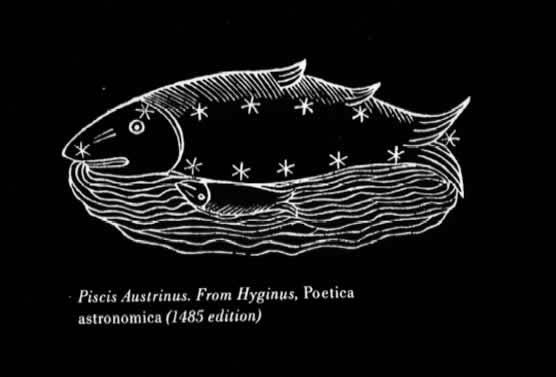
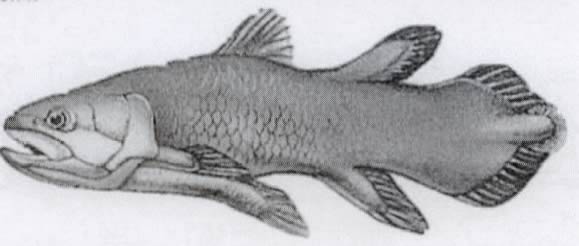
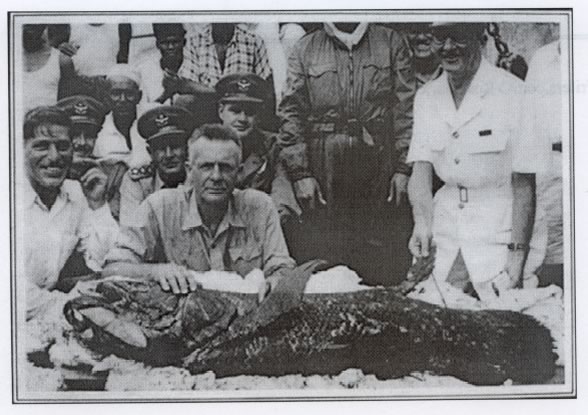
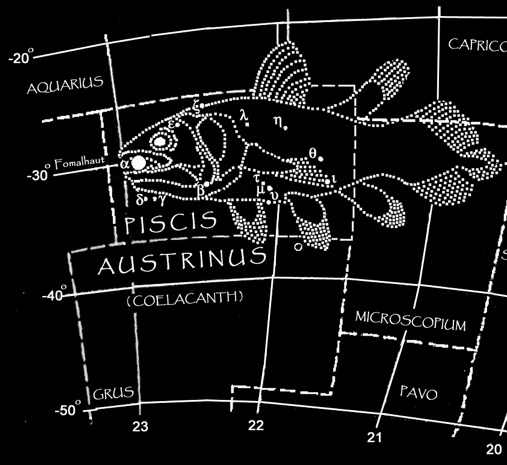

Sorry, the comment form is closed at this time.